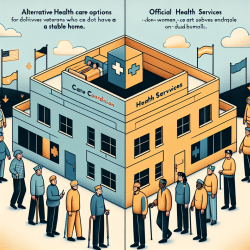Introduction
In the realm of juvenile justice, the quest for effective rehabilitation methods is ongoing. The recent research article, Improving Juvenile Justice Settings by Decreasing Coercion: One Lab’s Perspectives from Behind the Fence, sheds light on innovative behavior-analytic interventions that hold promise for transforming the juvenile justice system. This blog explores key findings from the study and offers practical insights for practitioners seeking to enhance their skills and outcomes in juvenile justice settings.
Understanding Coercion in Juvenile Justice
The research highlights the pervasive issue of coercion in juvenile justice facilities, where traditional punitive measures often prevail. Coercion, as defined by Goltz (2020), includes instances where individuals in power fail to provide resources for alternative behaviors. The study emphasizes the need to shift from coercive practices to positive reinforcement strategies that empower adolescents to make better choices.
Key Interventions and Outcomes
Individual Interventions
The research outlines several individual interventions aimed at addressing behavioral deficits and excesses among adolescents in juvenile facilities. These interventions include:
- Appropriate Reactions: Teaching adolescents to respond appropriately to staff feedback, which can lead to improved relationships and reduced coercive practices.
- Momentary Arousal Suppression: Helping adolescents control problematic sexual arousal through exercises that promote self-regulation.
- Tolerance Training: Enhancing adolescents' ability to tolerate nonpreferred environmental conditions, thereby reducing disruptive behavior.
Group Interventions
The study also explores group interventions that leverage low-effort manipulations to decrease disruptive behavior and increase appropriate behavior in settings with numerous adolescents. These interventions focus on creating a supportive environment where positive interactions are encouraged.
Behavioral Interventions for Staff
The research underscores the importance of equipping staff with the skills to initiate positive interactions with students. By increasing staff-initiated positive interactions, the study aims to change subsequent student behavior and foster a more rehabilitative environment.
Implications for Practitioners
For practitioners in juvenile justice settings, the findings from this research offer valuable insights into how behavior-analytic interventions can be applied to improve outcomes for adolescents. By focusing on reducing coercion and promoting positive reinforcement, practitioners can create environments that support rehabilitation and skill acquisition.
Encouraging Further Research
While the study provides a solid foundation for improving juvenile justice settings, it also highlights the need for further research to explore the long-term impact of these interventions. Practitioners are encouraged to engage in ongoing research to refine and expand behavior-analytic approaches in juvenile justice.
To read the original research paper, please follow this link: Improving Juvenile Justice Settings by Decreasing Coercion: One Lab’s Perspectives from Behind the Fence.










